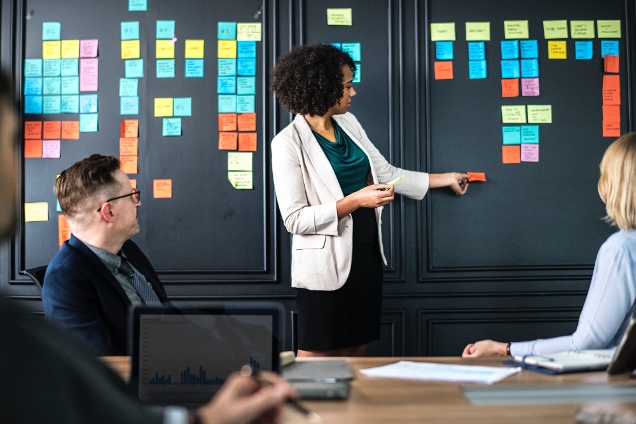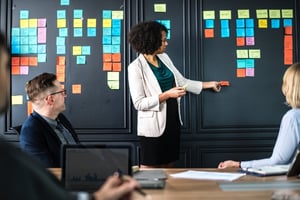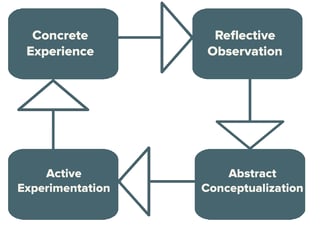
Learning in circles: The 4 stages of David Kolb
Geschreven door Faculty of Skills | May 03, 2017When we try to understand the process of learning and training, the name of one particular man and his model often emerges: David Kolb. In the ‘70s and ‘80s, educational theorists Kolb and colleague Ron Fry developed the Experiential Learning Model (ELM) which consists of four stages1. To really learn something, one has to go through all four stages. What do these stages look like in online practice?
Kolb’s model stood the test of time and has not only been cited in over 65,000 empirical publications2, but also proved its use in practice. At Faculty of Skills, we use it as a source of reference when developing training programs. The four stages of the model form a ‘never-ending’ circle, so trainees can begin at any of the four stages. In practice, they often have the same starting point though: we begin learning with a real life experience. We will describe this as point 1:
has not only been cited in over 65,000 empirical publications2, but also proved its use in practice. At Faculty of Skills, we use it as a source of reference when developing training programs. The four stages of the model form a ‘never-ending’ circle, so trainees can begin at any of the four stages. In practice, they often have the same starting point though: we begin learning with a real life experience. We will describe this as point 1:
1. The concrete experience
It starts with real life experiences that an employee deals with on a daily basis. Communication, whether on the phone, in a meeting room or at the front desk, often leads to experiences that can be demanding, stressful or unusual. By experiencing a new situation, an employee starts to learn. For example: you could either read about dealing with an unsatisfied customer, or you could actually have to deal with such a customer. The latter forms a much stronger base for learning. After encountering such an experience, the next step of observation and reflection occurs.
2. Observation and reflection of the experience
This is where the process of experiencing something in real life is translated into training. The second stage of the model, reflective observation, is when the trainee actively and consciously looks back and reflects on the experience. This could be their own memory, but also a (video) role play allowing to perform a ‘replay’ of the situation. Going back to the example of dealing with a dissatisfied customer, the trainee’s reaction can be recorded with the help of an actor and then reflected on by the trainee. This will naturally lead them to the next step in the cycle.
3. Form a theory
 After reflecting on an experience and replaying it, the logical next step according to Kolb is forming a theory on how to deal with the situation in the best way. Let’s go back to the dissatisfied customer. He or she might have been frustrated by someone or something. You may realize that de-escalating and getting the customer to blow off steam is necessary to deal with this situation. After de-escalating, there is room to investigate the underlying problem(s) of the customer together and deal with these accordingly.
After reflecting on an experience and replaying it, the logical next step according to Kolb is forming a theory on how to deal with the situation in the best way. Let’s go back to the dissatisfied customer. He or she might have been frustrated by someone or something. You may realize that de-escalating and getting the customer to blow off steam is necessary to deal with this situation. After de-escalating, there is room to investigate the underlying problem(s) of the customer together and deal with these accordingly.
4. Experiment
Now, the trainee has perceived a concrete experience, reflected on it by re-experiencing the situation and developed a theory on how to improve dealing with this situation. After these steps, the newly learned theory on dealing with the situation will ideally be used by the trainee. This can be seen as a ‘field test’ of the lessons learned from the experience. The trainee will be actively experimenting with the acquired or improved skills. Video role plays allow for individual experimentation in a safe place. After that, it’s up to the employee to apply it all in the workplace.
“Learning is the process whereby knowledge is created through the transformation of experience”
(Kolb, 2014, p. 38).
Want to find out more about what scientific insights help us to develop our training programs? Read our free e-book below!
1Kolb, D. A. (2014). Experiential learning: Experience as the source of learning and development. FT press.
